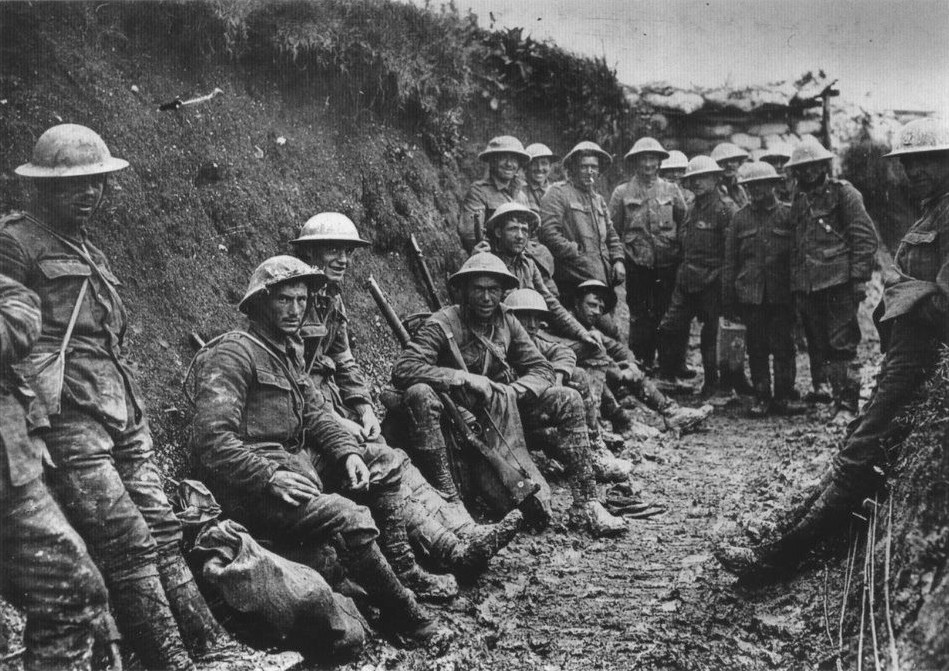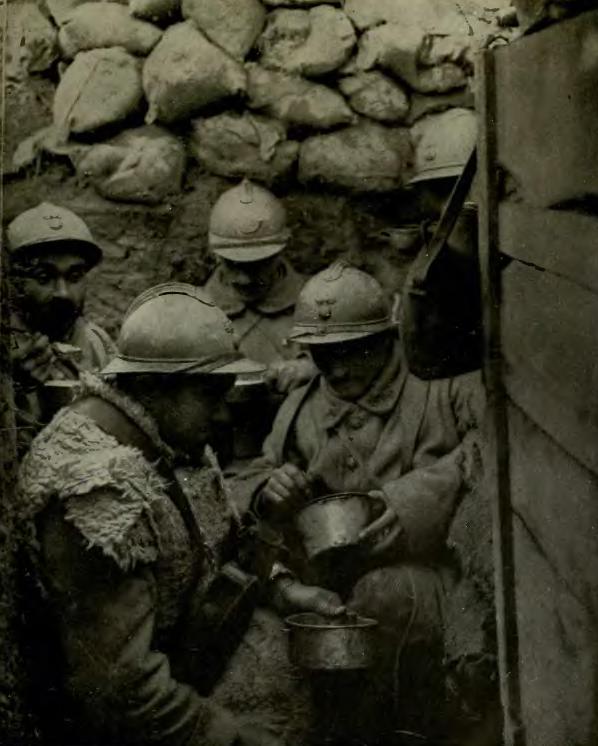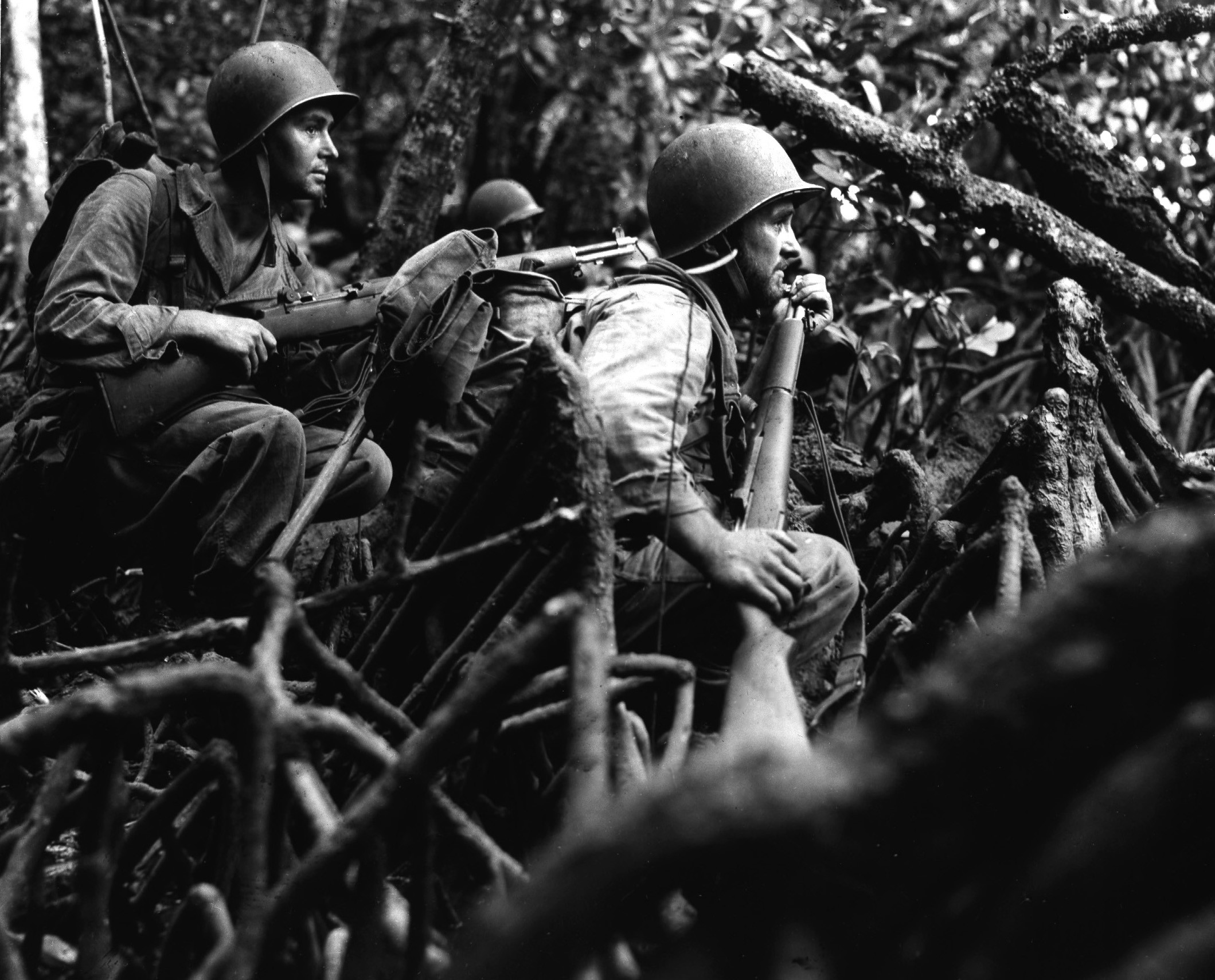|
Doughboy
Doughboy was a popular nickname for the American infantryman during World War I. Though the origins of the term are not certain, the nickname was still in use as of the early 1940s. Examples include the 1942 song "Johnny Doughboy Found a Rose in Ireland", recorded by Dennis Day, Kenny Baker, and Kay Kyser, among others, the 1942 musical film '' Johnny Doughboy'', and the character "Johnny Doughboy" in ''Military Comics''. It was gradually replaced during World War II by "G.I." Etymology The origins of the term are unclear. The word was in wide circulation a century earlier in both Britain and America, albeit with different meanings. Horatio Nelson's sailors and the Duke of Wellington's soldiers in Spain, for instance, were both familiar with fried flour dumplings called "doughboys",Evans, Ivor H. (ed.) (1981) ''Brewer's Dictionary of Phrase and Fable'' New York: Harper & Row, p.353 the precursor of the modern doughnut. Independently, in the United States, the term had come ... [...More Info...] [...Related Items...] OR: [Wikipedia] [Google] [Baidu] |
Spirit Of The American Doughboy
''The Spirit of the American Doughboy'' is a pressed copper sculpture by E. M. Viquesney, designed to honor the veterans and casualties of World War I. Mass-produced during the 1920s and 1930s for communities throughout the United States, the statue's design was the most popular of its kind, spawning a wave of collectible miniatures and related memorabilia as well as numerous copies by other artists. Its title is often shortened to ''The Doughboy''. Memorials The statue depicts a doughboy walking through shattered tree stumps strung with barbed wire, his rifle in his left hand and his right hand held high above his head, clutching a hand grenade. The aggressive design and affordability of the statue made it extremely popular, and more than 150 copies of it were created for municipal memorials across the nation. The Smithsonian American Art Museum currently lists 159 locations. Of that number, 134 currently existing originals have been independently authenticated, and several ... [...More Info...] [...Related Items...] OR: [Wikipedia] [Google] [Baidu] |
Johnny Doughboy
''Johnny Doughboy'' is a 1942 American black-and-white musical comedy film directed by John H. Auer for Republic Pictures. It stars Jane Withers in a dual role as a 16-year-old actress who is sick of playing juvenile roles, and her lookalike fan who is persuaded by a group of "has-been" child stars to perform with them in a U.S. troop show. The film features cameos by ex-child stars Bobby Breen, Carl "Alfalfa" Switzer, George "Spanky" McFarland, Baby Sandy, and others. It received an Academy Award nomination for Best Musical Score. Plot Sixteen-year-old film star Ann Winters is sick of playing juvenile roles and decides to run away for a vacation, to the consternation of her manager, Harry Fabian, who has just arranged for her to play a 12-year-old in ''Ann of Honeysuckle Farm''. As soon as Ann drives off, Penelope Ryan, president of the Ann Winters fan club back in Oriole, Nebraska, arrives for a two-week stay as the winner of a lookalike contest that Harry dreamed up. Though ... [...More Info...] [...Related Items...] OR: [Wikipedia] [Google] [Baidu] |
Dough
Dough is a thick, malleable, sometimes elastic paste made from grains or from leguminous or chestnut crops. Dough is typically made by mixing flour with a small amount of water or other liquid and sometimes includes yeast or other leavening agents, as well as ingredients such as fats or flavorings. Making and shaping dough begins the preparation of a wide variety of foodstuffs, particularly breads and bread-based items, but also including biscuits, cakes, cookies, dumplings, flatbreads, noodles, pasta, pastry, pizza, piecrusts, and similar items. Dough can be made from a wide variety of flour, commonly wheat and rye but also maize, rice, legumes, almonds, and other cereals or crops. Types of dough Doughs vary widely depending on ingredients, the desired end product, the leavening agent (particularly whether the dough is based on yeast or not), how the dough is mixed (whether quickly mixed or kneaded and left to rise), and cooking or baking technique. The ... [...More Info...] [...Related Items...] OR: [Wikipedia] [Google] [Baidu] |
Tommy Atkins
Tommy Atkins (often just Tommy) is slang for a common soldier in the British Army. It was certainly well established during the nineteenth century, but is particularly associated with the First World War. It can be used as a term of reference, or as a form of address. German soldiers would call out to "Tommy" across no man's land if they wished to speak to a British soldier. French and Commonwealth troops would also call British soldiers "Tommies". In more recent times, the term Tommy Atkins has been used less frequently, although the name "Tom" is occasionally still heard; private soldiers in the British Army's Parachute Regiment are still referred to as "Toms". Etymology ''Tommy Atkins'' or ''Thomas Atkins'' has been used as a generic name for a common British soldier for many years. The origin of the term is a subject of debate, but it is known to have been used as early as 1743. A letter sent from Jamaica about a mutiny amongst the troops says "except for those from N. ... [...More Info...] [...Related Items...] OR: [Wikipedia] [Google] [Baidu] |
Poilu
Poilu (; ) is an informal term for a late 18th century–early 20th century French infantryman, meaning, literally, ''the hairy one''. It is still widely used as a term of endearment for the French infantry of World War I. The word carries the sense of the infantryman's typically rustic, agricultural background, and derives from the bushy moustaches and other facial hair affected by many French soldiers after the outbreak of the war as a sign of masculinity. The poilu was particularly known for his love of pinard, his ration of cheap wine. The image of the dogged, bearded French soldier was widely used in propaganda and war memorials. The stereotype of the Poilu was of bravery and endurance, but not always of unquestioning obedience. At the disastrous Chemin des Dames offensive of 1917 under General Robert Nivelle, they were said to have gone into no man's land making baa'ing noises—a collective bit of gallows humour signalling the idea that they were being sent as lambs ... [...More Info...] [...Related Items...] OR: [Wikipedia] [Google] [Baidu] |
Digger (soldier)
Digger is a military slang term for primarily infantry soldiers from Australia and New Zealand. Evidence of its use has been found in those countries as early as the 1850s, but its current usage in a military context did not become prominent until World War I, when Australian and New Zealand troops began using it on the Western Front around 1916–17. Evolving out of its usage during the war, the term has been linked to the concept of the Anzac legend, but within a wider social context, it is linked to the concept of " egalitarian mateship". Origin Before World War I, the term "digger" was widely used in Australasia to mean a miner, and also referred to a Kauri gum-digger in New Zealand. In Australia and New Zealand, the term "digger" has egalitarian connotations from the Victorian Eureka Stockade Rebellion of 1854, and was closely associated with the principles of mateship, which may have had resonance from earlier use of the term Diggers as egalitarians. Many Aust ... [...More Info...] [...Related Items...] OR: [Wikipedia] [Google] [Baidu] |
Kenny Baker (singer)
Kenneth Laurence Baker (September 30, 1912 – August 10, 1985) was an American singer and actor who first gained notice as the featured singer on radio's ''The Jack Benny Program'' during the 1930s. Film Before he became a star, Baker sang as a member of the Vitaphone chorus at Warner Bros. At the height of his radio fame, and after leaving the Benny show in 1939 (succeeded by Dennis Day, whose tenor voice was very similar to Baker's), he appeared in 17 film musicals, including '' Mr. Dodd Takes the Air'' (1937), ''At the Circus'' (1939), and ''The Harvey Girls'' (1946). He also starred in the 1939 movie version of Gilbert and Sullivan's ''The Mikado''. He later co-starred with Mary Martin in the original Broadway production of Kurt Weill and Ogden Nash's '' One Touch of Venus'' (1943). Radio Baker first appeared on Jack Benny's weekly radio program on November 3, 1935, having been hired to replace singer Frank Parker. Parker had been very popular on the Benny program, ... [...More Info...] [...Related Items...] OR: [Wikipedia] [Google] [Baidu] |
GI (term)
G.I. are initials used to describe the soldiers of the United States Army and airmen of the United States Air Force and general items of their equipment. The term G.I. has been used as an initialism of "Government Issue", "General Issue", or "Ground Infantry", and was used by the logistics services of the United States Armed Forces. During World War I, American soldiers sardonically referred to incoming German artillery shells as "G.I. cans". Also during that war, "G.I." started being interpreted as "Government Issue" or "General Issue" for the general items of equipment of soldiers and airmen. The term "G.I." came into widespread use in the United States with the start of the Selective Service System ("the draft") in 1940, extending into 1941. It gradually replaced the term "Doughboy" that was used in World War I and the use of "G.I." expanded from 1942 through 1945. American five-star General Dwight D. Eisenhower said in 1945 that "the truly heroic figure of this war sG.I. ... [...More Info...] [...Related Items...] OR: [Wikipedia] [Google] [Baidu] |
White Pipe Clay
White pipe clay (Dutch: ''pijpaarde'') is a white-firing clay of the sort that is used to fashion smoking pipes. The clay was found in deposits of the Rhine and Meuse rivers and in the 16th-century centers of production for white pipe clay objects were Cologne, Utrecht, Liège and Gouda, South Holland. The name comes from the most common usage of white pipe clay, the Gouda smoking pipe or ''Goudse pijp''. Devotional figures In archaeological digs in the Netherlands, small white devotional figurines have been found, but more importantly, several recent digs in cities have uncovered the molds used to press these small figurines. Forty figurines and twenty-eight parts of figurines were discovered on the Oude Varkenmarkt in Leiden in a cesspit dating to the middle of the 15th century. Goudse pijp The Gouda pipe was a long-stemmed white tobacco pipe made in Gouda in the same way as the old figurines in a pressed mold. They became popular with the import of tobacco through the Dutch Eas ... [...More Info...] [...Related Items...] OR: [Wikipedia] [Google] [Baidu] |
Smithsonian Magazine
''Smithsonian'' is the official journal published by the Smithsonian Institution in Washington, D.C. The first issue was published in 1970. History The history of ''Smithsonian'' began when Edward K. Thompson, the retired editor of ''Life'' magazine, was asked by the then-Secretary of the Smithsonian, S. Dillon Ripley, to produce a magazine "about things in which the Smithsonian nstitutionis interested, might be interested or ought to be interested." Thompson would later recall that his philosophy for the new magazine was that it "would stir curiosity in already receptive minds. It would deal with history as it is relevant to the present. It would present art, since true art is never dated, in the richest possible reproduction. It would peer into the future via coverage of social progress and of science and technology. Technical matters would be digested and made intelligible by skilled writers who would stimulate readers to reach upward while not turning them off with jargon. ... [...More Info...] [...Related Items...] OR: [Wikipedia] [Google] [Baidu] |
Mexico
Mexico (Spanish: México), officially the United Mexican States, is a country in the southern portion of North America. It is bordered to the north by the United States; to the south and west by the Pacific Ocean; to the southeast by Guatemala, Belize, and the Caribbean Sea; and to the east by the Gulf of Mexico. Mexico covers ,Mexico ''''. . making it the world's 13th-largest country by are ... [...More Info...] [...Related Items...] OR: [Wikipedia] [Google] [Baidu] |


.jpg)



.jpg)
